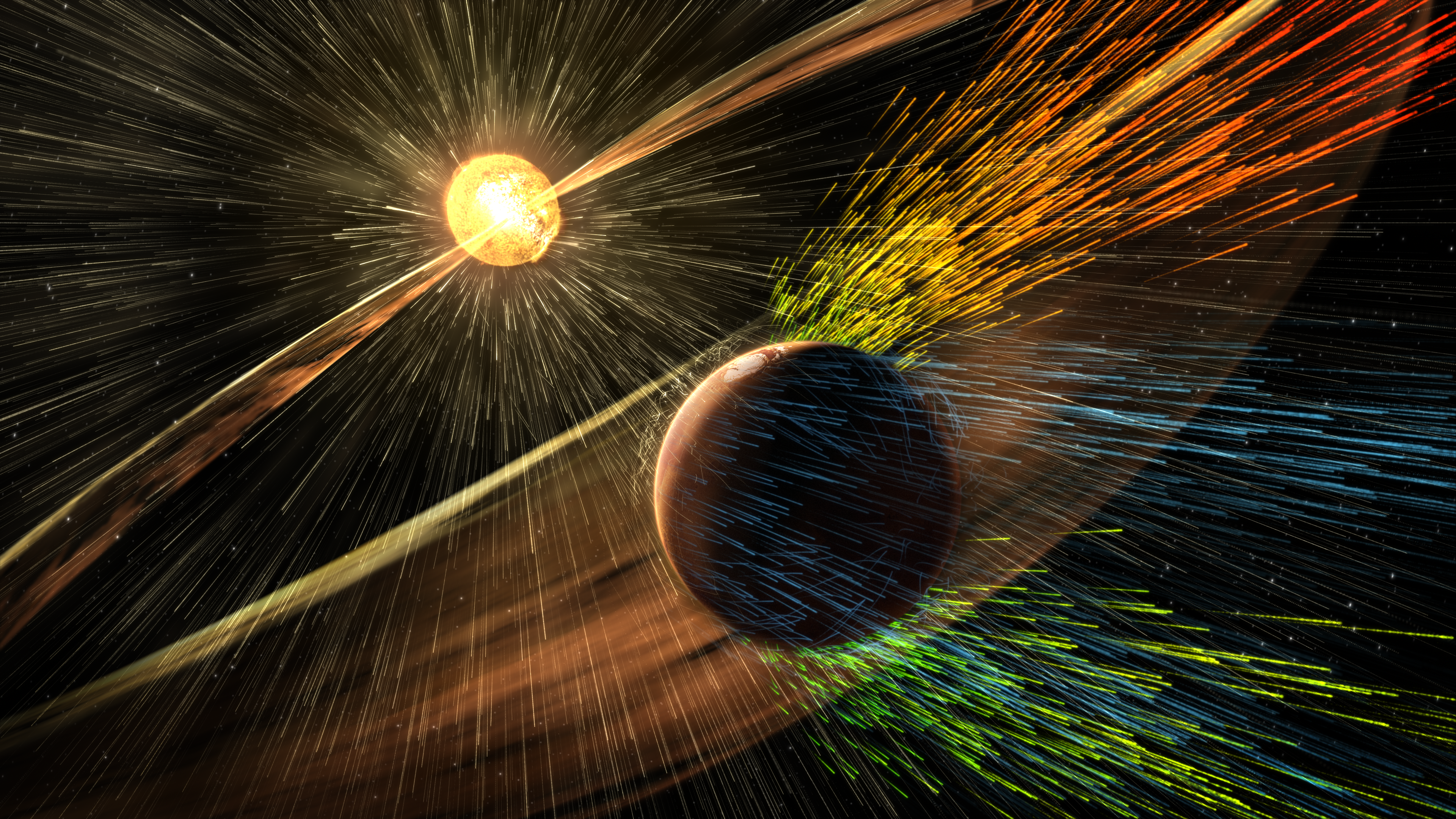THE heliosphere is a huge magnetized bubble of about 100 AU containing the entire solar system and moving through the interstellar medium at a
speed of about 30 km/s. The heliosphere is permeated by the solar wind, a super-sonic and super-Alfvénic plasma made of particles continuously
produced by our star the Sun. The existence of the solar wind was predicted as early as 1958 by E. Parker, ie. before the first spacecraft missions.
Since that time, many in situ measurements have been made which have improved drastically our knowledge of the solar wind (Kiyani et al., PTRSLA, 2015), and now the heliosphere is considered as the best astrophysical laboratory to analyze directly nonlinear phenomena
in magnetized plasmas [51,114]. The solar wind is a highly turbulent plasma with magnetized fluctuations characterized by different power law spectra
over 8 decades. At large scale, from 10-5 Hz to 1 Hz, the spectrum f-1.7 is generally attributed to MHD turbulence
(the Taylor’s hypothesis is used to link the frequency f to the wavenumber k). For 1 Hz < f < 100 Hz, a new power law appears around f-2.7
(see e.g. Sahraoui et al., ApJ, 2013). This second inertial range is attributed to sub-MHD turbulence, where ions and electrons
are dynamically decoupled, and where therefore MHD cannot be used. Dispersive waves like whistler waves and kinetic Alfvén waves are also detected
leading to a physical interpretation mixing waves and turbulence.
The possibility to interpret the second inertial range as a new turbulent regime was rarely mentioned before 2000 because the space probes
were not precise enough to make a clear distinction between an exponential law and a power law, the former being considered as a strong
evidence of dissipation. It is mainly with the new generation of space-crafts like Cluster/ESA with a much higher resolution, that the
presence of a second power law was firmly established, leaving the space for a turbulence theory at sub-MHD scales. The presence of two
turbulence regimes in the solar wind is an indication that the theoretical modeling must include the decoupling between the ions and the
electrons. In 2006, I proposed a wave turbulence theory based on Hall MHD to include, at the fluid level, the decoupling mentioned above.
This includes Alfvén, whistler (right circular polarization) and ion-cyclotron (left circular polarization) waves [49]. The nonlinear
analysis revealed a spectral anisotropy at all scales, and the exact power law solutions derived analytically (Kolmogorov-Zakharov spectra)
showed a transition – like in the solar wind – at the ion inertial length where the ions and the electrons start to decouple, with an energy
spectrum which steepens at small scales (in -2.5).
Nowadays, it is widely recognized that turbulence can explain the transition observed in the data and that Hall MHD provides
a first relevant model for understanding solar wind turbulence.
Several extensions have been made to investigate the properties of Hall MHD turbulence [57,73,88,96,100,104,113]. In particular, I derived
an exact relation which predicts the scaling law followed by two-point third-order correlations [62]: this law gives, for the first time,
some foundations to the heuristic energy spectrum used before in strong turbulence (Biskamp et al., PoP, 1999).

